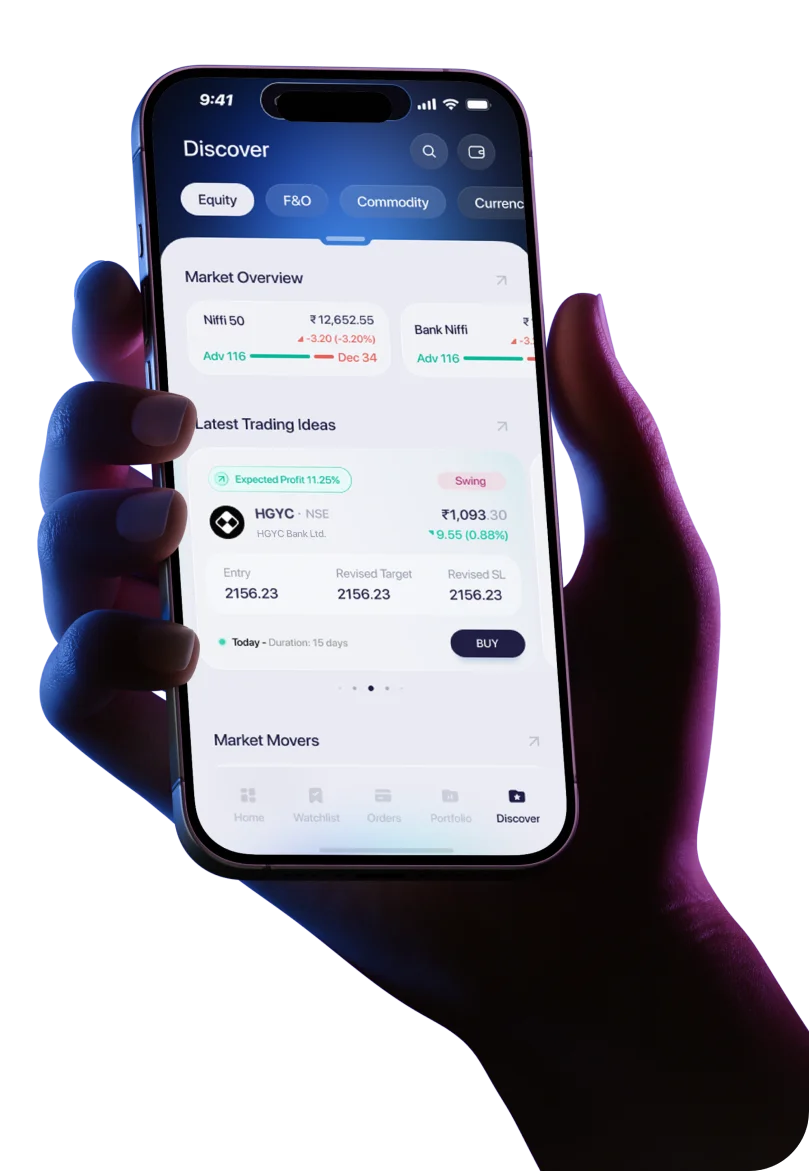Introduction
A covered call pairs two simple parts: you own the stock and you sell a call on the same stock. The goal is to collect option premium while keeping equity exposure. Many investors stop there. The edge appears when you understand Option Greeks—the set of sensitivities that explain why your option price moves with the market, time, and volatility.
Think of the Greeks as a dashboard: Delta shows directional exposure, Gamma shows how fast that exposure can change, Theta tracks the daily income you earn from time decay, and Vega reports how volatility swings can lift or sink your option price. Mastering these readings turns a basic income tactic into a tuned, risk-aware strategy. In short: understanding how Option Greeks impact your covered call can transform a basic approach into a tailored, risk-managed plan.
What Are Option Greeks?
Option Greeks are measures of sensitivity—how an option’s value changes when key inputs move.
- Delta (Δ): Change in option price for a ₹1 change in the stock price. A call with Delta 0.30 typically gains about ₹0.30 when the stock rises ₹1 (all else equal).
- Gamma (Γ): Change in Delta for a ₹1 move in the stock. High Gamma means Delta can jump quickly, so your exposure can shift faster than you expect.
- Theta (Θ): Approximate change in option price per day from time decay. For option sellers, negative Theta for the option translates into positive carry for your position.
- Vega (ν): Change in option price for a 1-point change in implied volatility. Calls become more valuable when implied volatility rises, and cheaper when it falls.
There are minor Greeks too—Rho (interest rates), Lambda or Elasticity (percentage sensitivity to price), and Vomma (sensitivity of Vega to volatility). For covered calls, these are usually secondary. The day-to-day risk and reward live in Delta, Gamma, Theta, and Vega.
Keywords to hit naturally: Option Greek, Trading Option Greeks, Option Greeks formula (see formulas below), Option Chain Greek (reading Greeks from the option chain helps selection).
Why Greeks Matter in Covered Calls
A covered call is basically long stock + short call. Greeks let you see the net effect:
- Net Delta: About +1 − Δ_call. If you sell a 0.30-Delta call, your net Delta ≈ +0.70. You still benefit if the stock rises, but less than owning the stock outright. The premium partly offsets small declines.
- Net Gamma: ≈ −Γ_call (since stock has zero Gamma). Short calls reduce Gamma, which dampens how quickly your exposure changes but also caps upside beyond the strike.
- Net Theta: ≈ +|Θ_call|. Time decay works for you. Every day that passes (without big price or volatility shocks) you earn a little from the call’s decay.
- Net Vega: ≈ −Vega_call. Rising implied volatility generally hurts short calls. A volatility spike can temporarily inflate the value of the option you sold.
In practice:
- Delta shapes your exercise risk and how much upside you keep.
- Gamma tells you how jumpy that Delta is around the strike—most noticeable near expiration and at-the-money.
- Theta pays the rent. It is the consistent income stream option sellers seek.
- Vega is the wild card. Premiums look attractive when volatility is high, but a sudden fall in volatility after you sell is what actually locks in easy wins; a spike can work against you in the short term.
Monitoring these Greeks—especially as expiration approaches—helps you choose strikes, manage exits, and decide when to roll.
Practical Application:
- A) Selecting the strike with Delta
Delta links to both premium and likelihood of assignment. Typical choices:
- ~0.15–0.25 Delta (further OTM): Lower premium, higher chance you keep the shares, more room for stock upside.
- ~0.30–0.40 Delta (near OTM): Higher premium, more income today, higher chance of assignment if the stock rallies.
- ≥0.50 Delta (ATM/ITM): Richest premium, strong income now, limited upside; assignment risk is significant.
Rule of thumb: Start with a Delta that matches your intention—income focus (higher Delta) vs. upside participation (lower Delta).
- B) Timing entries with Theta
As days pass, Theta accelerates (fastest in the final weeks). Selling calls after a bounce when the stock stalls can let Theta chip away while price cools. Avoid selling right before a major catalyst if you want clean time decay without gap risk.
- C) Reading volatility with Vega
Check the option chain’s implied volatility versus its recent range. Elevated IV means fatter premiums, but also higher risk of swings. If IV looks stretched and you expect normalization, that favors call selling. If a volatility surge is likely, consider shorter duration or lower Delta to reduce Vega risk.
- D) Managing exposure with Gamma
Gamma peaks at the strike near expiration. If your covered call is near the strike with a few days left, your Delta can swing quickly. Two common adjustments:
- Roll up (raise the strike) if the rally is strong and you want to keep more upside.
- Roll out (extend time) to rebuild Theta and reduce near-term Gamma sensitivity.
A quick, hypothetical illustration
- Stock at ₹100, you own 100 shares.
- You sell 1 call at ₹105, 30 days to expiry, Δ ≈ 0.30, Θ ≈ −0.05/day, Vega ≈ 0.10 (option values change ~₹0.10 per 1-pt IV move).
- If price drifts around ₹100 and IV stays steady, Theta works for you—premium decays daily.
- If price jumps toward ₹105, Delta rises (Gamma effect), your short call gains assignment risk; you can roll up/out.
- If IV falls, the option cheapens (good for you). If IV spikes, option value can rise even without a price move (short-term headwind).
Risks and Considerations
Limited upside: If the stock closes above the strike at expiry, your shares will likely be called away. You keep the premium plus gains up to the strike, but you forgo further upside.
Downside risk remains: The premium cushions declines, but does not fully protect you. If the stock falls sharply, the loss on shares can outweigh the premium collected. Consider pairing covered calls with risk controls such as position sizing or protective puts (creating a “collar” when needed).
Volatility swings: You are short Vega. A sudden rise in implied volatility can inflate the option’s value and delay your profit realization. Expect this into events like earnings or policy announcements.
Assignment timing: American calls on dividend-paying stocks can be exercised early if ex-dividend economics favor the call buyer. Monitor ex-dates and extrinsic value; roll earlier if the option’s time value collapses.
Liquidity and slippage: Wider bid-ask spreads can erode edge. Prefer liquid names and strikes where the Option Chain Greek readings are stable and fills are fair.
Putting It All Together: A Simple Playbook
- Scan the option chain and shortlist strikes by Delta that fit your goal: income first (0.30–0.40) or upside room (0.15–0.25).
- Check Theta across expiries. Nearer expiries deliver faster decay but more rolling; further expiries bring larger upfront premium with slower decay.
- Compare implied volatility to its recent range. Elevated IV with neutral outlook is a sweet spot for selling.
- Note Gamma into the final two weeks. If price hovers near your strike, be proactive: roll up/out to control assignment risk and keep Theta working.
- Manage exits:
- If the option decays to a small value quickly, consider buying back to lock gains and free the shares.
- If the stock breaks out, consider rolling up to a higher strike to restore upside.
Conclusion
Covered calls are popular because they are simple and repeatable. The real improvement comes from reading the Option Greeks. Delta helps you set the right strike and understand assignment odds. Gamma alerts you when exposure can change quickly near the strike. Theta is your daily income engine. Vega keeps you honest about volatility risk. Put together, these readings turn a one-size-fits-all tactic into a plan tuned to your outlook, time horizon, and risk tolerance.




 Easy & quick
Easy & quick
Leave A Comment?